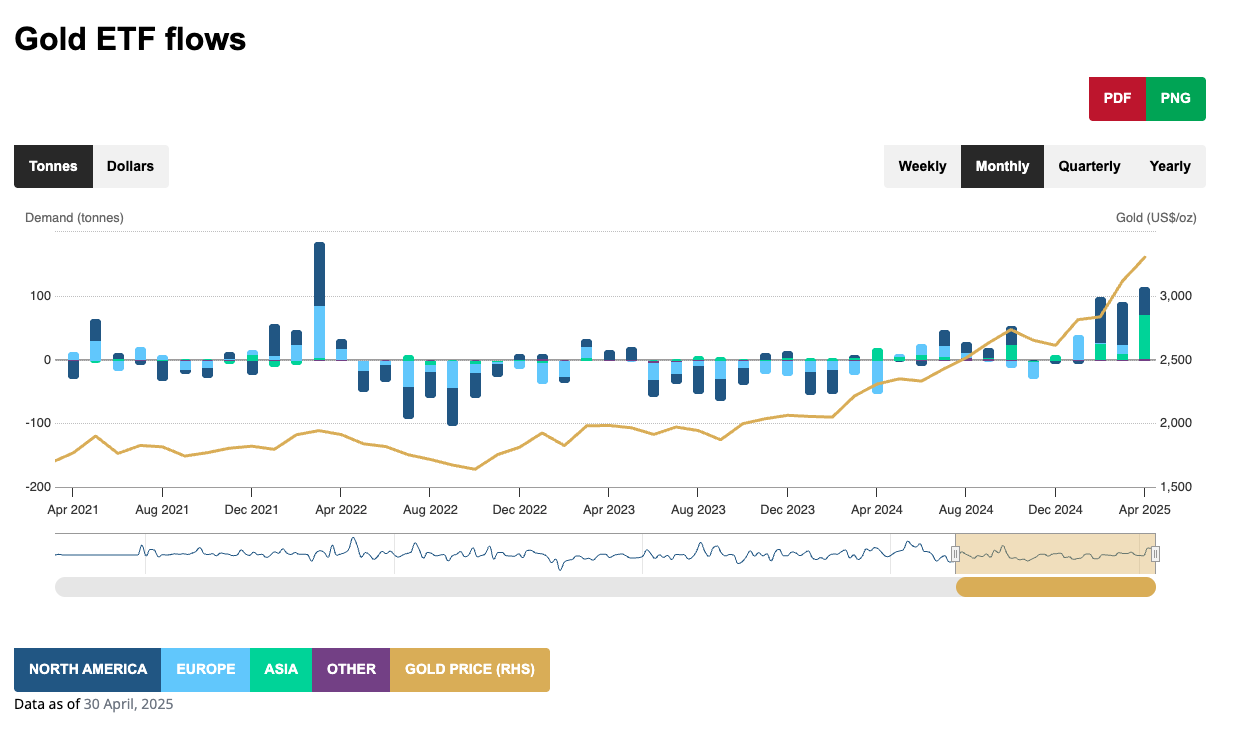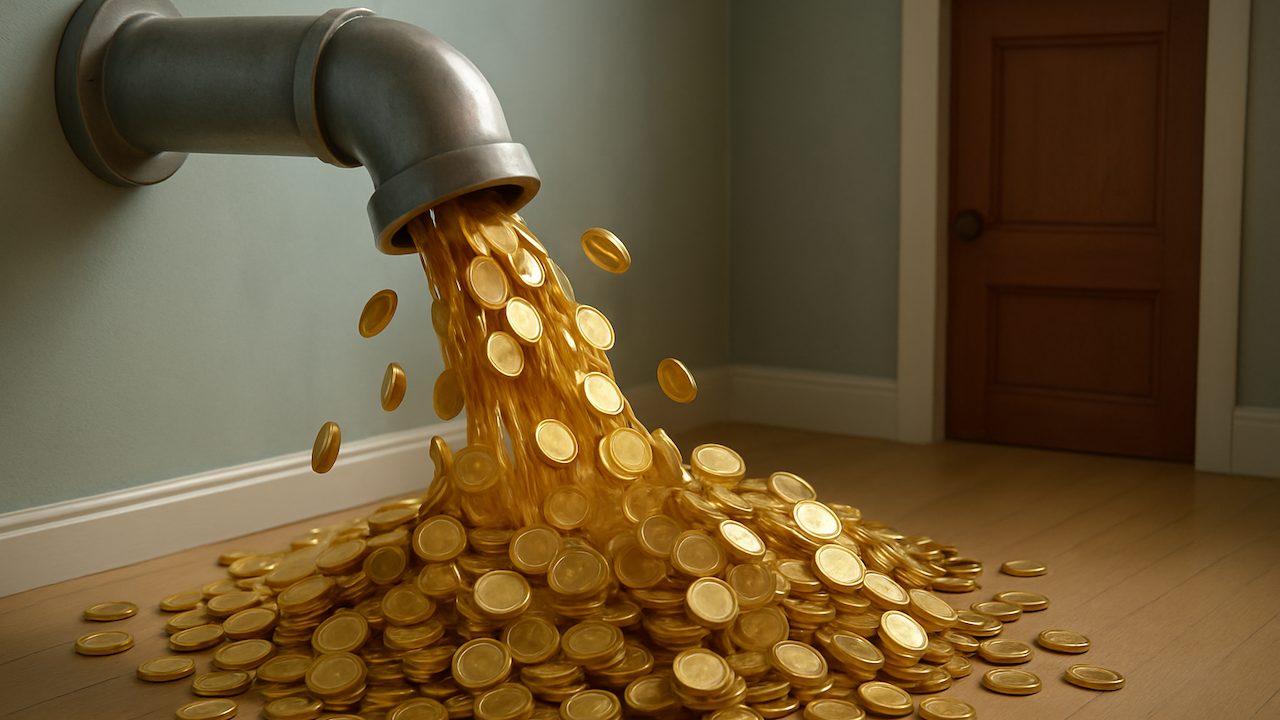(Mike Maharrey, Money Metals News Service) Flows of gold into Asian ETFs exploded in April, driving global ETF gold holdings higher for the fifth straight month.
Last month, 115.3 tonnes of gold poured into gold-backed funds globally. It was the strongest month since August 2022.
A combination of additional gold and the surging price pushed total assets under management (AUM) by gold ETFs to $379 billion, a 10 percent increase and a month-end record.
Even with the surge of gold into ETFs over the last several months, fund holdings remain 10 percent below the month-end peak of 3,915 tonnes in October 2020.

Asian funds led the way, accounting for 65 percent of the net total. Investment interest in gold has skyrocketed in the East, especially China, where physical bar and coin demand hit the second-highest level on record in the first quarter.
Asian-based funds added 69.6 tonnes of gold last month, a 27.8 percent increase. In dollar terms, Asian gold ETFs upped their AUM by $7.3 billion, the highest monthly increase on record.
To put the move into perspective, April gold flows into Asian funds surpassed the total in Q1 and the full year 2024.
The bulk of that demand came from China-based funds.
According to the World Gold Council, the ongoing trade dispute with the U.S., worries about economic growth, equity volatility, and lower government bond yields have all created tailwinds for gold in China.
Gold also moved into Japanese funds for the seventh straight month, while Indian funds reported positive flows after net outflows in March.
North American ETFs reported strong gold inflows of 44.2 tonnes, totalling $4.5 billion. This was down compared to February and March, but was the second-strongest April on record.
Net cumulative gold flows in North American ETFs through the first four months of the year have already outpaced 2020’s historic performance.
Gold price momentum and stock market volatility are giving gold ETFs a boost in North America, but despite investor interest in gold, this has yet to translate into demand for physical metal. U.S. gold coin and bar demand plunged in the first quarter.
According to the World Gold Council, “Expectations for continued market volatility – driven by concerns such as future trade policy and inflation – should provide a level of support to flows over the medium-to-long term.”
European funds reported modest outflows of gold totaling -0.7 tonnes ($807 million). Gold outflows in the UK were mitigated by inflows in Switzerland and France.
Funds in other regions, including Australia and Africa, reported gold inflows for the fifth straight month, totaling 2.2 tonnes.
ETFs are a convenient way for investors to play the gold market, but owning ETF shares is not the same as holding physical gold.
ETFs are relatively liquid. You can buy or sell an ETF with a couple of mouse clicks. You don’t have to worry about transporting or storing metal. In a nutshell, it allows investors to play the gold market without buying full ounces of metal at the spot price.
Since you are just buying a number in a computer, you can easily trade your ETF shares for another stock or cash whenever you want, even multiple times on the same day. Many speculative investors take advantage of this liquidity.
But while a gold ETF is a convenient way to play the price of gold on the market, you don’t actually possess any gold. You have paper. And you don’t know for sure that the fund has all the gold either, especially when the fund sees inflows. In such a scenario, there have been difficulties or delays in obtaining physical metal.
Gold trading volumes skyrocketed in April, averaging $441 billion per day. This was 48 percent higher month-on-month.
Net long positions held by money managers moved lower, falling to 360 tonnes by the end of the month. This was 35 percent below the 2024 average.
According to the World Gold Council, this was mainly driven by a sharp decline in total longs – likely due to profit taking as gold refreshed new records, along with a mild rise in shorts.
Mike Maharrey is a journalist and market analyst for Money Metals with over a decade of experience in precious metals. He holds a BS in accounting from the University of Kentucky and a BA in journalism from the University of South Florida.

